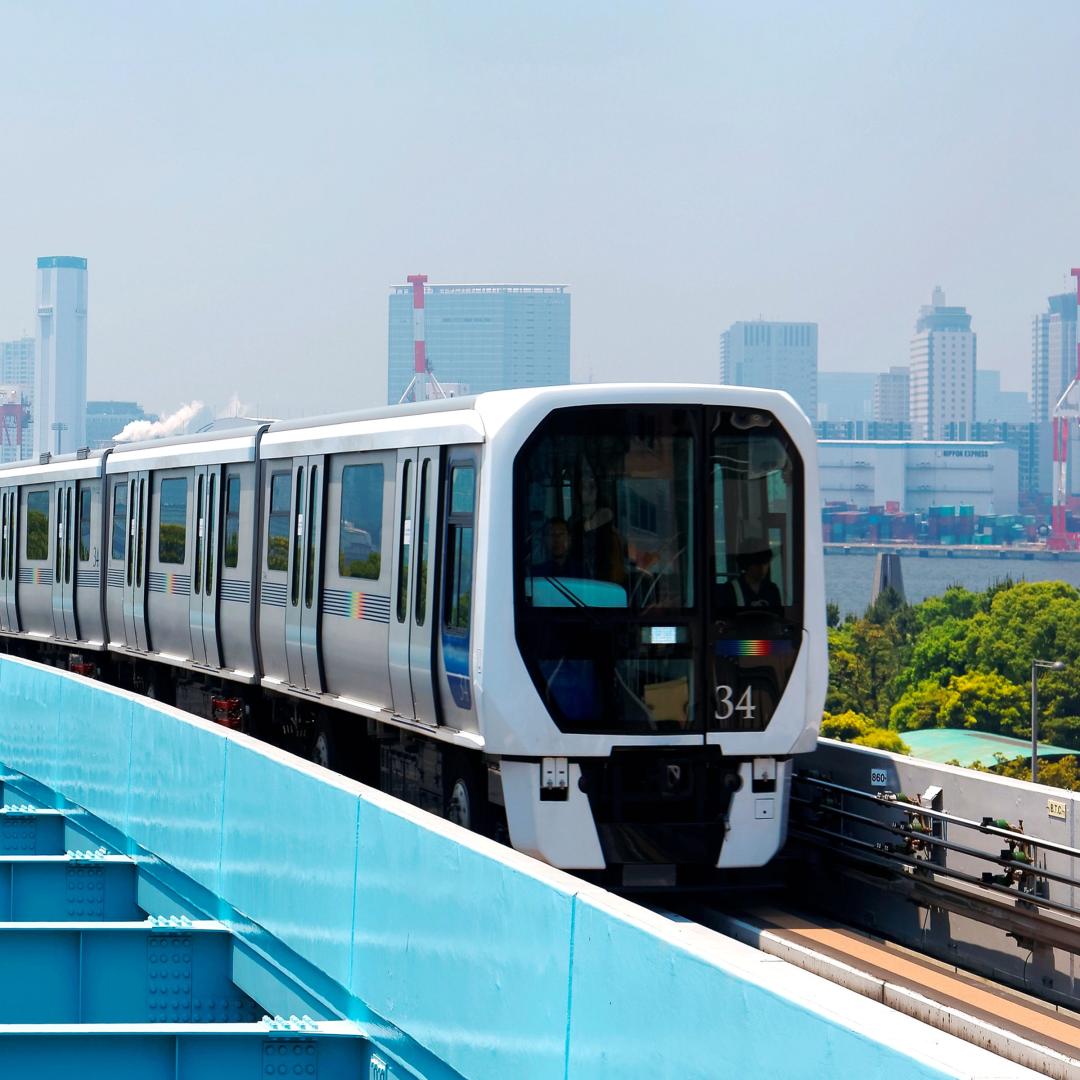American Public Transit Association. (2020). Economic impact of public transportation investment – American Public Transportation Association. https://www.apta.com/research-technical-resources/research-reports/economic-impact-of-public-transportation-investment/
American Public Transit Association. (2021). National Transit Database Tables. American Public Transportation Association. https://www.apta.com/research-technical-resources/transit-statistics/ntd-data-tables/
Beaudoin, J., Farzin, Y. H., & Lin Lawell, C.-Y. C. (2015). Public transit investment and sustainable transportation: A review of studies of transit’s impact on traffic congestion and air quality. Research in Transportation Economics, 52, 15–22. https://doi.org/10.1016/j.retrec.2015.10.004
Bloomberg New Energy Finance. (2018). Electric buses in cities: Driving towards cleaner air and lower CO₂
.
Börjesson, M., Fung, C. M., & Proost, S. (2020). How rural is too rural for transit? Optimal transit subsidies and supply in rural areas. Journal of Transport Geography, 88, 102859. https://doi.org/10.1016/j.jtrangeo.2020.102859
Borck, R. (2019). Public transport and urban pollution. Regional Science and Urban Economics, 77, 356–366. https://doi.org/10.1016/j.regsciurbeco.2019.06.005
Brown, A. E. (2017). Car-less or car-free? Socioeconomic and mobility differences among zero-car households. Transport Policy, 60, 152–159. https://doi.org/10.1016/j.tranpol.2017.09.016
Brunner, H., Hirz, M., Hirschberg, W., & Fallast, K. (2018). Evaluation of various means of transport for urban areas. Energy, Sustainability and Society, 8(1), 9. https://doi.org/10.1186/s13705-018-0149-0
Christensen, L., & Vázquez, N. S. (2013). Post-harmonised European National Travel Surveys. Proceedings from the Annual Transport Conference at Aalborg University, 20(1), Article 1. https://doi.org/10.5278/ojs.td.v1i1.5701
Department for Transport. (2024). Transport Statistics Finder: Interactive Dashboard. Department for Transport. https://app.powerbi.com/view?r=eyJrIjoiMGE2YTQ5YTMtMDkwNC00MjBmLWFkNjUtMjBjZjUzZWU0ZjNmIiwidCI6IjI4Yjc4MmZiLTQxZTEtNDhlYS1iZmMzLWFkNzU1OGNlNzEzNiIsImMiOjh9
Ecke, L. (2023, December 19). German Mobility Panel—Startseite (KIT) [Text]. Lisa Ecke. https://mobilitaetspanel.ifv.kit.edu/english/
Federal Highway Administration. (2022). Summary of Travel Trends: 2022 National Household Travel Survey. US Department of Transportation. https://nhts.ornl.gov/assets/2022/pub/2022_NHTS_Summary_Travel_Trends.pdf
Goel, D., & Gupta, S. (2017). The Effect of Metro Expansions on Air Pollution in Delhi. The World Bank Economic Review, 31(1), 271–294. https://doi.org/10.1093/wber/lhv056
Gouldson, A., Sudmant, A., Khreis, H., & Papargyropoulou, E. (2018). The Economic and Social Benefits of Low-Carbon Cities: A Systematic Review of the Evidence. https://urbantransitions.global/en/publication/the-economic-and-social-benefits-of-low-carbon-cities-a-systematic-review-of-the-evidence/
Guo, S., & Chen, L. (2019). Can urban rail transit systems alleviate air pollution? Empirical evidence from Beijing. Growth and Change, 50(1), 130–144. https://doi.org/10.1111/grow.12266
Health Affairs. (2021). Public Transportation in the U.S. RWJF. https://www.rwjf.org/content/rwjf-web/us/en/insights/our-research/2021/07/public-transportation-in-the-us-a-driver-of-health-and-equity.html
Hemmat, W., Hesam, A. M., & Atifnigar, H. (2023). Exploring noise pollution, causes, effects, and mitigation strategies: A review paper. European Journal of Theoretical and Applied Sciences, 1(5), Article 5. https://doi.org/10.59324/ejtas.2023.1(5).86
Ilie, N., Iurie, N., Alexandr, M., & Vitalie, E. (2014). Rehabilitation of the tram DC traction with modern power converters. 2014 International Conference and Exposition on Electrical and Power Engineering (EPE), 704–709. https://doi.org/10.1109/ICEPE.2014.6970000
International Transport Forum. (2020). Good to Go? Assessing the Environmental Performance of New Mobility (Corporate Partnership Board). OECD. https://www.itf-oecd.org/sites/default/files/docs/environmental-performance-new-mobility.pdf
IPCC. (2023). Renewable Energy Sources and Climate Change Mitigation—IPCC. https://www.ipcc.ch/report/renewable-energy-sources-and-climate-change-mitigation/
Kennedy, C. A. (2002). A comparison of the sustainability of public and private transportation systems: Study of the Greater Toronto Area. Transportation, 29(4), 459–493. https://doi.org/10.1023/A:1016302913909
Kuminek, T. (2013). Energy Consumption in Tram Transport. Logistics and Transport. https://www.semanticscholar.org/paper/Energy-Consumption-in-Tram-Transport-Kuminek/2aa2d97130a8e51ea7f64913c2065e8437126774
Lim, L. K., Muis, Z. A., Hashim, H., Ho, W. S., & Idris, M. N. M. (2021). Potential of Electric Bus as a Carbon Mitigation Strategies and Energy Modelling: A Review. Chemical Engineering Transactions, 89, 529–534. https://doi.org/10.3303/CET2189089
Lovasi, G. S., Treat, C. A., Fry, D., Shah, I., Clougherty, J. E., Berberian, A., Perera, F. P., & Kioumourtzoglou, M.-A. (2023). Clean fleets, different streets: Evaluating the effect of New York City’s clean bus program on changes to estimated ambient air pollution. Journal of Exposure Science & Environmental Epidemiology, 33(3), 332–338. https://doi.org/10.1038/s41370-022-00454-5
Litman, T. (2024). Evaluating Public Transit Benefits and Costs.
Loukaitou-Sideris, A. (2014). Fear and safety in transit environments from the women’s perspective. Security Journal, 27(2), 242–256. https://doi.org/10.1057/sj.2014.9
Mahmoud, M., Garnett, R., Ferguson, M., & Kanaroglou, P. (2016). Electric buses: A review of alternative powertrains. Renewable and Sustainable Energy Reviews, 62, 673–684. https://doi.org/10.1016/j.rser.2016.05.019
Martinez, D., Mitnik, O., Salgado, E., Yãnez-Pagans, P., & Scholl, L. (2020). Connecting to Economic Opportunity: The Role of Public Transport in Promoting Women’s Employment in Lima | Journal of Economics, Race, and Policy. https://link.springer.com/article/10.1007/s41996-019-00039-9
Mees, P. (2010). Transport for Suburbia: Beyond the Automobile Age. Earthscan.
Norton, P. D. (2011). Fighting Traffic: The Dawn of the Motor Age in the American City. MIT Press.
Ortiz, F. (2002). Biodiversity, the City, and Sprawl. Boston University Law Review, 82(1), 145–194.
Padeiro, M., Louro, A., & da Costa, N. M. (2019). Transit-oriented development and gentrification: A systematic review. Transport Reviews, 39(6), 733–754. https://doi.org/10.1080/01441647.2019.1649316
Prieto-Curiel, R., & Ospina, J. P. (2024). The ABC of mobility. Environment International, 185, 108541. https://doi.org/10.1016/j.envint.2024.108541
Qi, Y., Liu, J., Tao, T., & Zhao, Q. (2023). Impacts of COVID-19 on public transit ridership. International Journal of Transportation Science and Technology, 12(1), 34–45. https://doi.org/10.1016/j.ijtst.2021.11.003
Rodrigues, A. L. P., & Seixas, Sonia. R. C. (2022). Battery-electric buses and their implementation barriers: Analysis and prospects for sustainability. Sustainable Energy Technologies and Assessments, 51, 101896. https://doi.org/10.1016/j.seta.2021.101896
Rodriguez Mendez, Q., Fuss, S., Lück, S., & Creutzig, F. (2024). Assessing global urban CO₂
removal. Nature Cities, 1(6), 413–423. https://doi.org/10.1038/s44284-024-00069-x
Serulle, N. U., & Cirillo, C. (2016). Transportation needs of low income population: A policy analysis for the Washington D.C. metropolitan region. Public Transport, 8(1), 103–123. https://doi.org/10.1007/s12469-015-0119-2
Schaller, B. (2017). Unsustainable? The Growth of App-Based Ride Services and Traffic, Travel and the Future of New York City. Schaller Consulting.
Schrag, Z. M. (2000). “The Bus Is Young and Honest”: Transportation Politics, Technical Choice, and the Motorization of Manhattan Surface Transit, 1919-1936. Technology and Culture, 41(1), 51–79.
Sertsoz, M., Kusdogan, S., & Altuntas, O. (2013). Assessment of Energy Efficiencies and Environmental Impacts of Railway and Bus Transportation Options. In I. Dincer, C. O. Colpan, & F. Kadioglu (Eds.), Causes, Impacts and Solutions to Global Warming (pp. 921–931). Springer. https://doi.org/10.1007/978-1-4614-7588-0_48
Statistics Netherlands. (2024, July 4). Mobility; per person, personal characteristics, modes of travel and regions [Webpagina]. Statistics Netherlands. https://www.cbs.nl/en-gb/figures/detail/84709ENG
Swanstrom, T., Winter, W., & Wiedlocher, L. (2010). The Impact of Increasing Funding for Public Transit. https://librarysearch.adelaide.edu.au/discovery/fulldisplay/alma9928308820601811/61ADELAIDE_INST:UOFA
Tayal, D., & Mehta, A. (2021). Working Women, Delhi Metro and Covid-19: A Case Study in Delhi-NCR | The Indian Journal of Labour Economics. https://link.springer.com/article/10.1007/s41027-021-00313-1?fromPaywallRec=true
UITP. (2024). A global analysis of transit data. CityTransit Data. https://citytransit.uitp.org
US Department of Transportation. (2010). Public transportation’s role in responding to climate change. US Department of Transportation. https://www.transit.dot.gov/sites/fta.dot.gov/files/docs/PublicTransportationsRoleInRespondingToClimateChange2010.pdf
Van Acker, V., & Witlox, F. (2010). Car ownership as a mediating variable in car travel behaviour research using a structural equation modelling approach to identify its dual relationship. Journal of Transport Geography, 18(1), 65–74. https://doi.org/10.1016/j.jtrangeo.2009.05.006
Venter, C., Jennings, G., Hidalgo, D., & Pineda, A. (2017). The equity impacts of bus rapid transit: A review of the evidence and implications for sustainable transport: International Journal of Sustainable Transportation: Vol 12 , No 2—Get Access. https://www.tandfonline.com/doi/full/10.1080/15568318.2017.1340528
Xiao, C., Goryakin, Y., & Cecchini, M. (2019). Physical Activity Levels and New Public Transit: A Systematic Review and Meta-analysis. American Journal of Preventive Medicine, 56(3), 464–473. https://doi.org/10.1016/j.amepre.2018.10.022

